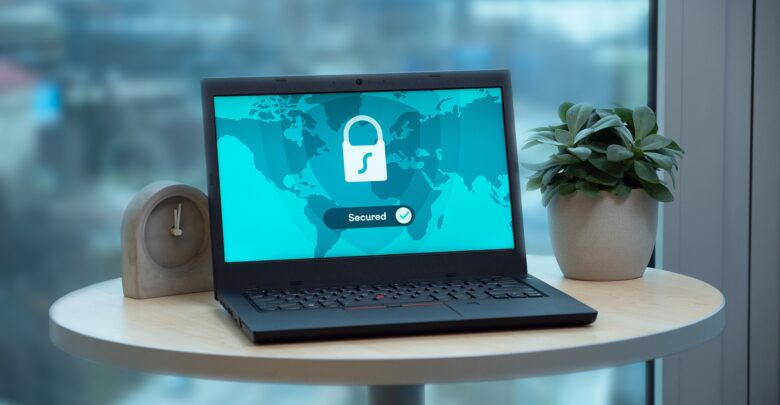
When it comes to communication, some discussions are so private that you don’t want any other person to hear them. But with the advent of digital communication, you would think the pain point has been solved such that you can now communicate directly with your friends, family, and even business partners without being heard by another person (of course, except it is a group discussion), while instead of every single message you are exchanging is been stored and recorded in a central server.
This might look harmless till you are aware that the server is vulnerable to an attack from the outside and anyone can lay their hands on the messages and contents being exchanged, or even the government officials can demand that the server be raided in search of evidence.
However, in case you don’t want to permit the server to read your messages before transferring them to the recipient, the solution for you is the End-to-End Encryption.
End-to-end encryption technology is the technology that allows for communication encryption between the sender and the receiver such that only the two parties involved in the communication can decrypt the data. The origin of this technology can be traced back to the 90s when Phil Zimmerman released a technology named Pretty Good Privacy.
In this guide, you will get to read everything that will help you understand how the end-to-end encryption works and why you might need to use it, but before then, it is good the guide explains the technology behind the unencrypted messages.
How Unencrypted messages work?
To get the perfect demo, let’s consider a regular messaging platform you operate on a smartphone. You will need to first install the application and proceed to create an account before you are allowed to communicate with your friends, family, or acquittances, who must have done the same to enjoy the privileges.
So here is how it comes, when you search for a friend’s username and write him a message, the message is actually sent to the central server of the application which after realizing who the message is meant for will go-ahead to post the message to the destination. An illustration of this technology is sending a letter through a post office to a friend. The letter is actually delivered by the postman to your friend, not you.
This system is known as the client-server model with your phone as the client. In this case, your phone is not doing much to deliver the messages but the heavy work is left for the server to take care of. This means that the service provider serves as the middleman for your messages to get through. Remember the post office illustration.
However, most of the time, the A → S and the S → B data channel are encrypted. (A being the sender, S stands for the Server, and B for the receiver). A technology that falls under this category is the TLS – Transport Layer Security which secures connections between servers and clients.
These TLS technology and other security solutions alike make it difficult for anyone to intercept the messages which it is being transferred from the clients to the server and vice versa. The problem, however, with unencrypted messages is that while third parties cannot intercept or read these messages, the server can still access and read them. Hence, the need for maximum encryption that shut down even the server’s access to the content of the messages.
With this encryption, the data from A will be encrypted with a cryptographic key that only B has, thereby making it difficult for the server to access or read these messages.
Without the end-to-end encryption, the server can continually store your messages unencrypted in the database alongside others in their millions, which over time can suffer data breaches and can be quite disastrous on the end-users.
How does end-to-end encryption work?
With end-to-end encryption, you can be sure that no one can read your messages or access your communications, not even the server through which you are exchanging the messages. To put it in better perspective, communications can include plain text, emails, files, and even video calls.
With this technology, data on messaging and video call applications like Google Duo, WhatsApp, and Signal are now encrypted such that only the sender and the intended recipient can decode and decrypt the communication. In the end-to-end encryption technology, one of the common words you will hear is the Key Exchange. And this will lead us to the next section of this guide.
What is a Diffie-Hellman Key Exchange?
The basic idea behind the Diffie-Hellman Key Exchange was first conceived by some cryptographers named Whitfield Diffie, Ralph Merkle, and Martin Hellman. The key exchange is such a powerful technology that allows different parties to generate shared secrets in an environment that is potentially hostile.
In other words, creating the key can happen in insecure forums – where there are onlookers everywhere – without having the ensuing messages compromised. However, in this Information Age, this technique is quite valuable because parties involved can now communicate without swapping keys physically.
This key exchange technique involves some cryptographic magic and big numbers, but to avoid turning this guide into a too-technical one, we will avoid the technical details but instead consider an analogy that will help you understand better – the paint colors analogy.
So, suppose Kate and Smith wanted to be in separate hotel rooms at the opposite ends of the hallway but they want the room to have the same paint color without anyone else finding out what the color is. Sadly, spies are swarming around the floors of the hotel and there is no way they could conveniently pass this message neither could they enter each other’s room (assuming) which means they can only interact through the hallway.
So here is how they decided to handle it; Kate and Smith both agreed on a color in the public, say yellow which they shared a bucket between themselves and return to their rooms after which they both add and mix a secret color that no spy around knows about in their respective rooms. Let’s say Kate adds a shade of blue and Smith adds a shade of red. This means that for Kate, it is now a Blue-Yellow paint concoction and for Smith, a Red-Yellow paint concoction.
After this round of mixing, they exchanged their paint bucket through the hallway. At this point, it doesn’t matter that there are spies because they cannot get the exact shade of the color they have as a result. After all, a secret color exists. It is important to say, this paint color analogy is only an illustration as things could be more technical than this in real life. The reality around key exchange can be harder than guessing the secret color. However, let us continue.
After exchanging their resultant color through the hallway, both Kate and Smith entered their rooms again to mix their secret color with the mixture again. At this point, the content of their paint bucket should be the same. First Kate will now have the Blue-Red-Yellow mixture, while Smith will have the Red-Blue-Yellow Mixture.
With this, both Smith and Kate can now go ahead to paint their rooms with the color spies outside are not aware of. This basically is the technology around creating an open shared secret without being afraid of others, only that rather than dealing with paints and the hallway exchange, we are talking about private keys and public keys.
Messages Exchanging
As soon as the parties involved in the exchange have their shared secret, they can now use it as a basis for the mutual and symmetric encryption method. These popular implementations are additional incorporated techniques that allow for more robust techniques, but all the abstract reality is kept away from the users. This means that as soon as you attempt to connect with a friend through an application with the end-to-end encryption technology, all the encryption and decryption happens only on those devices involved and it eventually bars any other major software vulnerabilities.
The meaning of this is that it doesn’t matter who is trying to intercept the message whether a hacker, law enforcement agency or even the service provider, if the service truly has end-to-end encryption, an attempt to intercept the messages being exchanged will only give them gibberish and nonsense with no meaning.
End-to-End Encryption Vs. VPN: Which One is Better?
Both the VPN and end-to-end encryption technologies are a way to encrypt your messages online. In this section of the guide, we will try to uncover the differences between the two technologies.
1. The end-to-end encryption technology is used in communication services that involve two parties, typically a sender and the recipients, such as online chatting, email services, web conferencing, and others alike. But VPNs, on the other side, are not limited to the communication services alone. The technology also encrypts all your activities while surfing the web, including file sharing, gaming, and streaming.
2. You can be sure that all VPNs assure you of the encryption features which guarantee your privacy and security regardless of the app you are using. But not all communication services have end-to-end encryption features integrated into them.
3. For the end-to-end encryption technology, data is encrypted while in transit, and it won’t be decrypted until it reaches the recipient. But in the case of a VPN, the data sent is encrypted, but it is already decrypted when it gets to the VPN server. The only assurance you have is that most VPN services promise a no-log policy which means that they don’t store your data on their server.
The Pros and Cons of End-to-End Encryption
- The Pros of end-to-end encryption
End-to-end encryption in a setup without any of its disadvantages is indisputably the best and highly valuable resource for achieving increased privacy, security, and confidentiality. Like the Onion routing technology, end-to-end encryption is a technology publicized by privacy activists across the world. It is easy to incorporate this technology into the applications that look like the ones we are used to. This means that the technology is accessible to anyone as long as they own and can use a mobile phone.
However, you might want to think that end-to-end encryption is a technology useful for only whistleblowers and criminals, but it is going to be a mistake to think like that. This is because even the most secured corporations known are still susceptible to cyberattacks which can expose the information, data, and messages sent by unencrypted users to the malicious parties. Also, it has been proven that access to sensitive information and communications or even the users’ identity documents can have catastrophic effects on the lives of individuals.
Here is now the ultimate advantage even, if the company whose users are secured with the end-to-end encryption is breached, all the information the hackers will extract will be meaningless (as long as the implementation of the encryption is as robust as needed). The best thing the hackers can lay hold of is the metadata. Though access to metadata is still a matter concerning privacy, it is an improvement compared to access to all the communications unencrypted.
- The Cons of end-to-end encryption
There is indeed nothing with advantages without its disadvantages, and the same applies to the end-to-end encryption, though whether these things are truly a downside will depend on your perspective. Some parties believe that the introduction of end-to-end encryption is problematic in itself as no one could access your messages without having the corresponding keys.
The opposing parties have also argued that the end-to-end encryption means that criminals can also communicate safely, since they are aware that no one, including the government officials or tech agencies, can access or decrypt their communications. In their argument, they believe that there is no need for a law-abiding citizen to be keeping their communications, including phone calls and messages secret at any point. This sentiment has been echoed by some lawmakers who proposed legislation that there should be backdoor systems that will allow access to every communication. This, of course, will defeat the purpose of the technology in the first place.
Something worth noting is that the applications with end-to-end encryption are not 100% secured. Even though the messages are made obscure when it is being relayed from one device to another, they are still visible on the endpoints, either smartphones or laptops. Though this cannot be termed a drawback to the end-to-end encryption in the real sense, it is worth keeping in mind.
This means that even though the end-to-end encryption guarantees that no one can intercept your messages while it is in transit through the server, some other threats are still possible.
1. Your device can be stolen, and if peradventure you don’t have a security system on the device, or the attacker found a way around the security system, they can still gain access to your communications and information.
2. Your device could be compromised. There is malware that can allow attackers to spy on your communications and information before and after they are exchanged.
Another risk of the end-to-end encryption is that during the key exchange, someone could position themselves in the middle between you and your peer by staging a man-in-the-middle attack. This will happen at the beginning of the communication because when you are performing the key exchange, you are not sure if the key belongs to your friend. This means that you can unknowingly establish a secret with an attacker. By implication, the attacker will be receiving your messages and will already have the key to decrypt them and they can trick your friend in the same manner, which means that they can relay your messages after reading or modifying them as they wanted.
Though to get around this, some apps have found a solution by integrating some kind of extra security code feature. This feature is a QR code or a string of numbers that you can share with your contacts through a secured channel that is ideally offline. If the number match, you can then be sure that there is no third-party spying on your communications.
Conclusion
Apart from the applications mentioned earlier, the number of end-to-end encryption tools available for free is growing. There is the Google Duo and the iMessage of Apple that are operational on the Android and iOS operating systems and even at that more and more security and privacy, conscious applications are rolling out.
However, as a way of conclusion, it is good to mention that end-to-end encryption is not a magical barrier against every form of cyberattack. Only that you can use it actively to reduce the risk of getting exposed online with little or no effort. Together with technologies like VPNs, Tor, and cryptocurrencies, the end-to-end encryption messengers can be very useful and can be a very valuable addition to the collection of technologies that allow for digital privacy.
Tokenhell produces content exposure for over 5,000 crypto companies and you can be one of them too! Contact at info@tokenhell.com if you have any questions. Cryptocurrencies are highly volatile, conduct your own research before making any investment decisions. Some of the posts on this website are guest posts or paid posts that are not written by Tokenhell authors (namely Crypto Cable , Sponsored Articles and Press Release content) and the views expressed in these types of posts do not reflect the views of this website. Tokenhell is not responsible for the content, accuracy, quality, advertising, products or any other content or banners (ad space) posted on the site. Read full terms and conditions / disclaimer.







